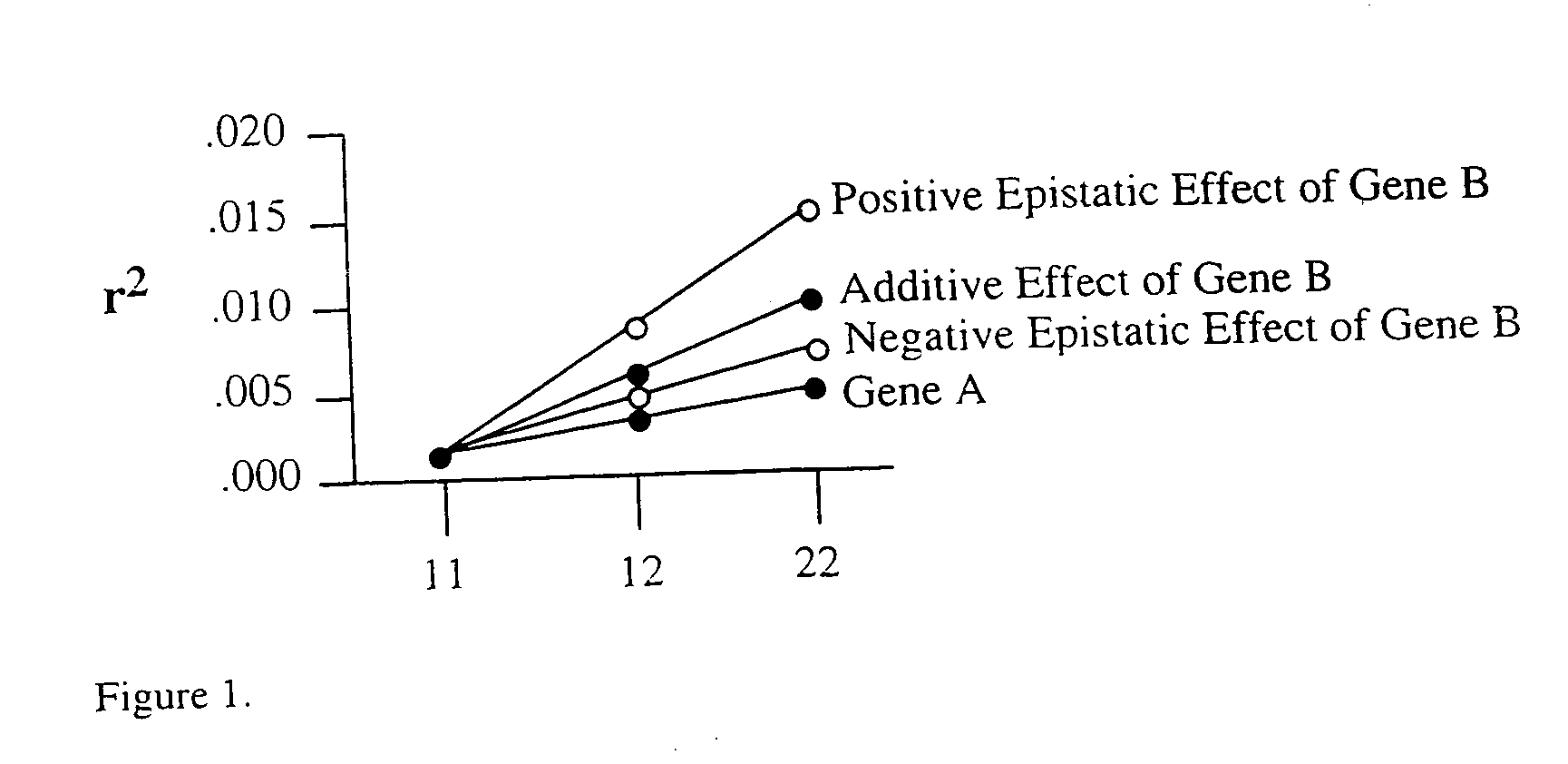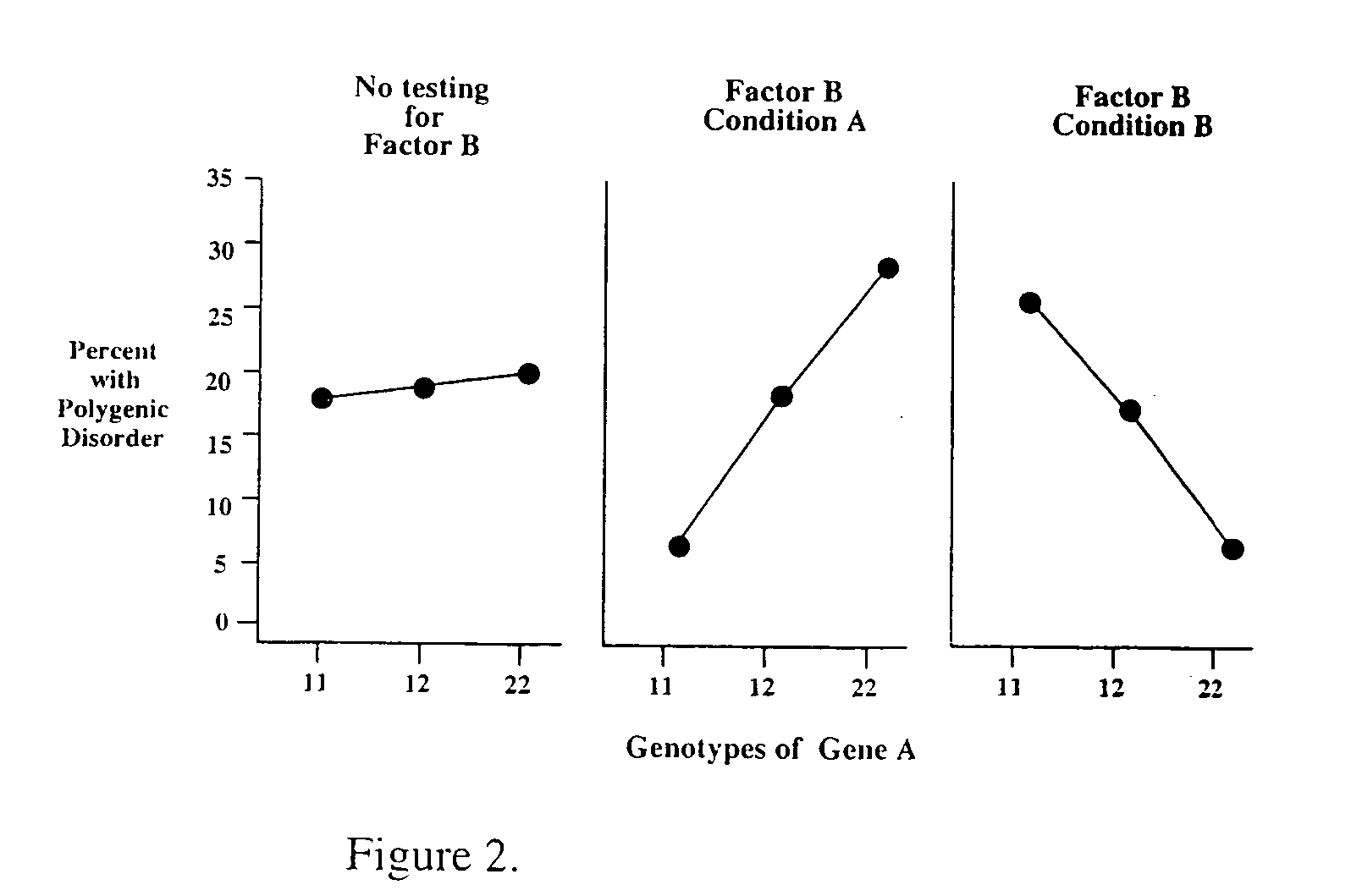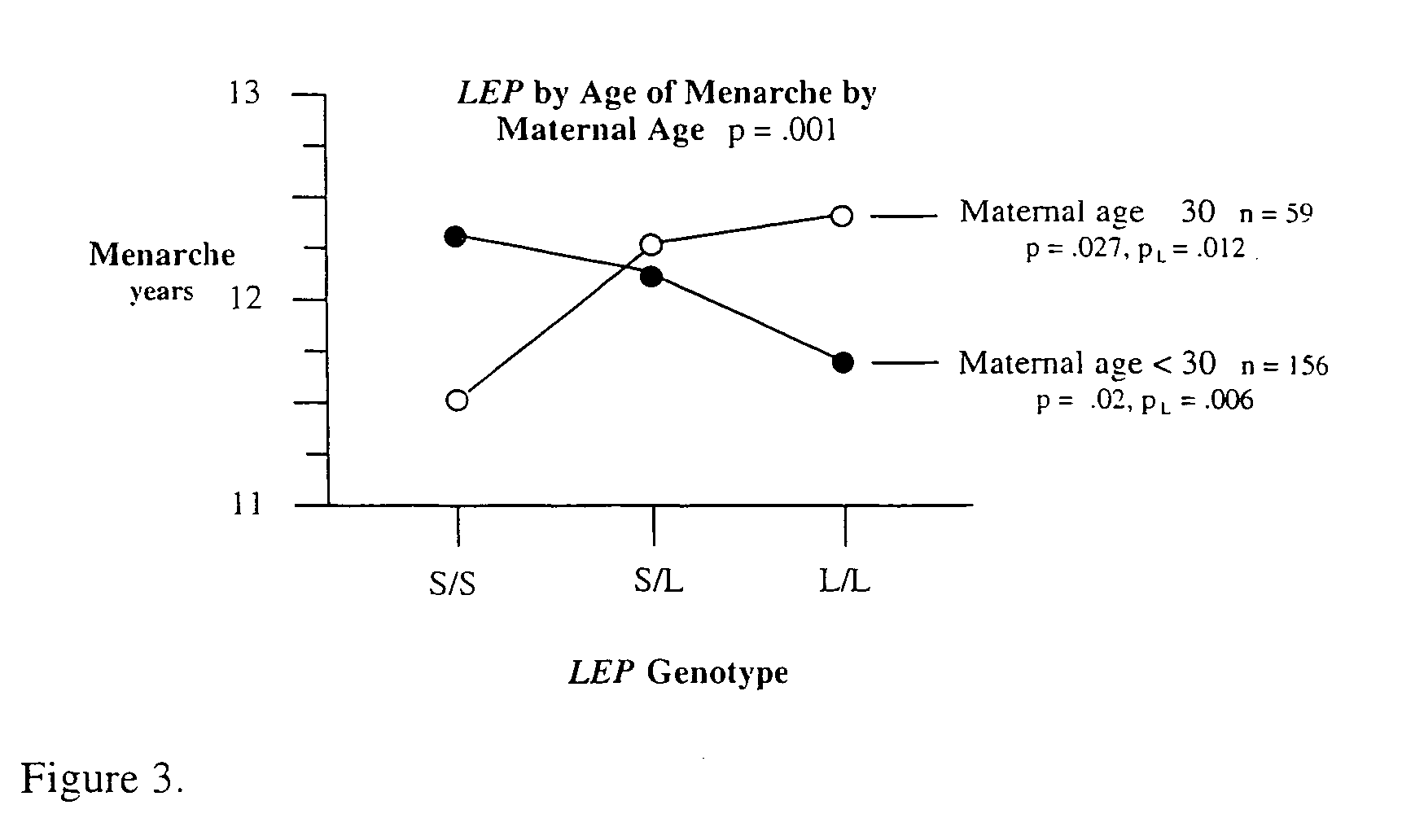Method for risk assessment for polygenic disorders
a risk assessment and polygenic disorder technology, applied in the field of polygenic disorder risk assessment, can solve the problems of small success, low success rate, and inability to identify polygenes involved in polygenic disorders, and achieve the effect of reducing the risk of type i errors
- Summary
- Abstract
- Description
- Claims
- Application Information
AI Technical Summary
Benefits of technology
Problems solved by technology
Method used
Image
Examples
example 1
[0090] LEP.times.Maternal Age with Age of Menarche in the Obesity Database.
[0091] Our interest in the potential role of maternal age in human genetics was stimulated by the study of mice by Wang et al.sup.73 entitled Maternal age and traits in offspring. They reported that the body, testes, and epididymis weight of 3 month old male offspring (F1 generation) was significantly higher for mothers of medium maternal age compared to offspring of mothers at lower or higher maternal age. They also observed that during pregnancy, serum estradiol was significantly higher in the mothers of medium maternal age compared to mothers of low or high maternal age. During pregnancy, serum testosterone was higher in the lower and medium maternal age mothers than in these with a high maternal age. These maternal age effects were also shown in the age of completed puberty of the F1 generation females. This age was significantly delayed in the F1 females of mothers of low and high maternal age compared t...
example ii
[0096] DRD1.times.Maternal Age with OCD in the Tourette Syndrome Database.
[0097] To address whether maternal age has an effect on the association of other genes with other phenotypes, we chose to first examine the role of maternal age as a confounding factor in the association of the DRD1 gene with obsessive compulsive disorder and other disorders. Knockout studies have implicated the DRD1 gene in obsessive compulsive disorders (OCD)..sup.34 To test this we utilized our DNA database of Tourette syndrome subjects. This database consists of DNA, psychiatric assessments, and pedigrees on a large number of individuals with Tourette syndrome (TS), in whom OCD and other disorders are common comorbid conditions..sup.9, 20, 40 The extensive pedigrees allow the determination of maternal age, birth order and related variables. FIG. 4 shows these results.
[0098] For probands with a maternal age of .ltoreq.25 years there was a 2 allele codominant relationship between the percent with comorbid OC...
example iii
[0099] DRD1.times.Maternal Age with General Anxiety Disorder in TS Database.
[0100] Since the knockout mice also suggested an association of the DRD1 gene with anxiety.sup.71 we also examined the presence or absence of general anxiety disorder (GAD) in the TS probands. These results are shown in FIG. 5.
[0101] The results for GAD were similar to those for OCD. For probands with a maternal age of .ltoreq.25 years there was a 2-allele codominant relationship between the percent with comorbid GAD and the DRD1 gene. This was reversed in probands with maternal age .gtoreq.26. Now the association of the DRD1 gene with GAD was 1 allele codominant. The dotted line shows the non-significant association of the DRD1 gene when maternal age was not considered. Neither the DRD1 gene alone (p=0.629) nor maternal age alone (p=0.852) was significant, while the DRD gene by maternal age interaction was significant (p=0.007). In this case the genostasis effect on GAD was due to the non-gene variable of m...
PUM
| Property | Measurement | Unit |
|---|---|---|
| temperatures | aaaaa | aaaaa |
| temperatures | aaaaa | aaaaa |
| temperatures | aaaaa | aaaaa |
Abstract
Description
Claims
Application Information
 Login to View More
Login to View More - R&D
- Intellectual Property
- Life Sciences
- Materials
- Tech Scout
- Unparalleled Data Quality
- Higher Quality Content
- 60% Fewer Hallucinations
Browse by: Latest US Patents, China's latest patents, Technical Efficacy Thesaurus, Application Domain, Technology Topic, Popular Technical Reports.
© 2025 PatSnap. All rights reserved.Legal|Privacy policy|Modern Slavery Act Transparency Statement|Sitemap|About US| Contact US: help@patsnap.com



